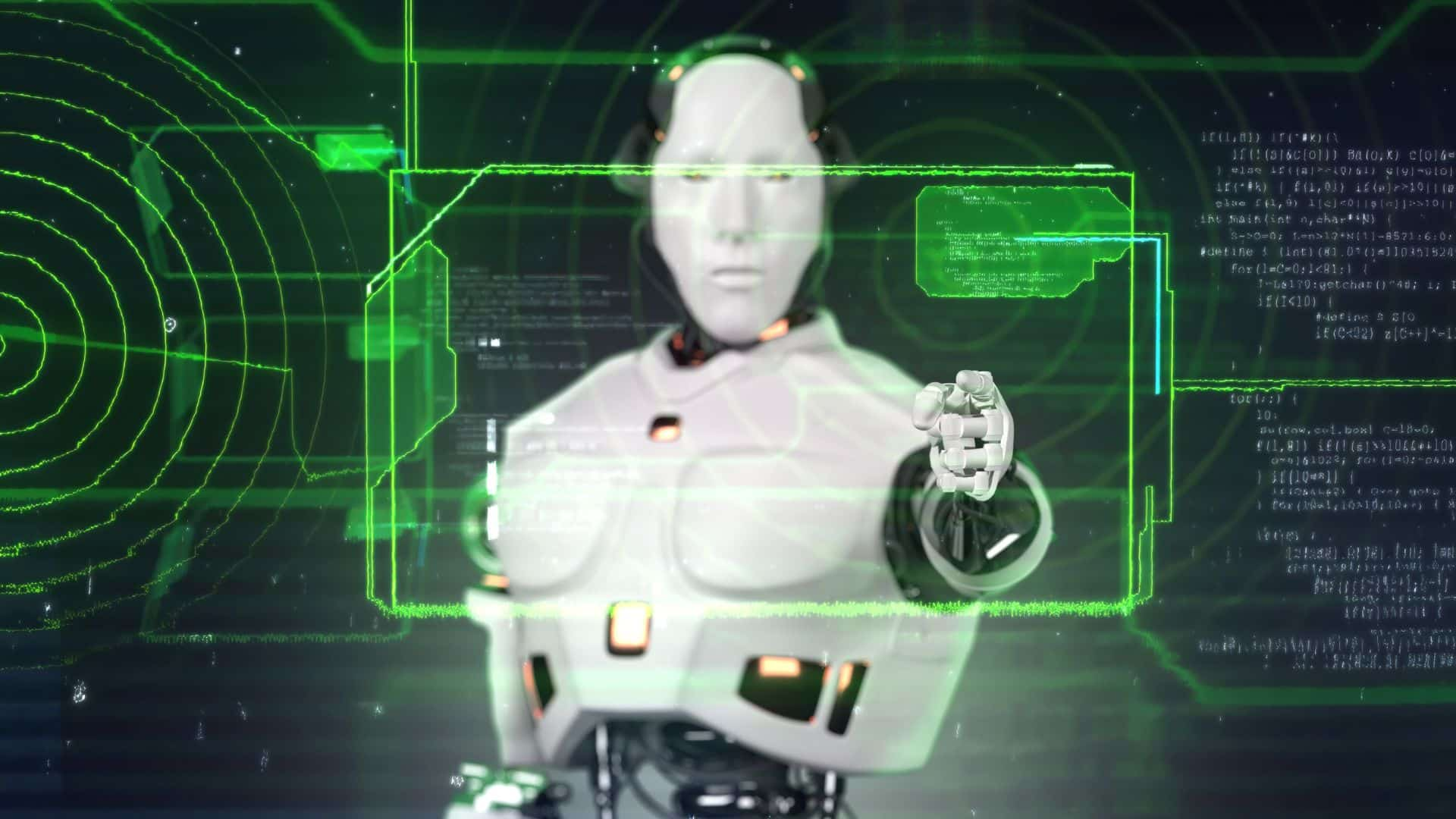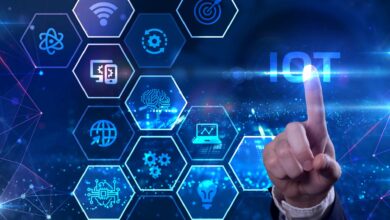AI and Robotics: Exploring the Synergy for Intelligent Automation

Artificial intelligence (AI) and robotics are two fields that have immense potential to transform various industries through automation. When combined, they provide a powerful framework for developing intelligent and autonomous systems that can perceive, reason, learn, and interact with the physical world. This article explores the synergy between AI and robotics that enables the next level of intelligent automation.
How AI and Robotics Work Together
AI refers to the ability of machines to mimic human intelligence and behavior. It includes technologies like machine learning, deep learning, natural language processing, computer vision, etc. Robotics deals with the design, construction, operation, and application of robots which are programmed machines capable of carrying out complex series of actions autonomously.
While AI focuses on software and algorithms, robotics focuses on the hardware and mechanical aspects. AI gives the robots the brains to sense, analyze, make decisions, and perform actions while robotics provides the body and mechanisms to move and manipulate objects. The fusion of both fields leads to intelligent systems that can perceive environments, interpret situations, make optimal decisions, and take actions to achieve specific goals.

Key Areas of Synergy
Some of the key areas where AI and robotics work together are:
- Perception: AI technologies like computer vision and audio processing enable robots to perceive environments using cameras, LIDAR, microphones, etc. This allows the collection of visual, depth, audio, and other sensor data.
- Navigation: AI planning algorithms help robots navigate environments without colliding with obstacles. Sensor data is used to create maps and models for navigation.
- Manipulation: AI techniques like reinforcement learning allow robotic arms and grippers to learn how to grasp, pick, move, and manipulate objects dexterously.
- Interaction: Natural language processing and computer vision enable robots to recognize speech, text, gestures, and faces. This allows seamless human-robot interaction.
- Reasoning: Knowledge representation and reasoning techniques help robots analyze situations, establish contextual awareness, and make intelligent decisions for complex tasks.
- Learning: Machine learning and deep learning give robots the ability to learn from data, experience, and interactions without being explicitly programmed, thereby increasing autonomy.
Benefits of Integrating AI and Robotics
Combining AI and robotics provides numerous benefits that expand the scope and capabilities of autonomous systems:
1. Adaptability
AI algorithms allow robots to continually adapt their behavior by sensing environmental changes, learning from experience, and improving performance instead of following pre-programmed commands rigidly.
2. Autonomy
The integration empowers robots to function independently in complex environments without constant human guidance. They can assess situations, set their own goals, and determine optimal actions.
3. Efficiency
AI enables robots to perform tasks rapidly, optimally, and repetitively with greater speed and accuracy than humans. Intelligent automation increases throughput and productivity.
4. Versatility
The fusion expands the capabilities of robots to easily switch between multiple tasks and application domains using the same hardware platform.
5. Interactivity
Natural user interfaces like speech, touch, and gestures facilitated by AI establish seamless bidirectional communication between humans and robots.
6. Decision Making
AI provides robots with the ability to weigh multiple alternatives, assess risks, evaluate costs and benefits, and choose optimal solutions for addressing tasks.
7. Problem Solving
Robots can apply reasoning algorithms to solve problems in creative ways that go beyond pre-programmed rule-based methods.
Key Applications of AI-enabled Robotics
The synergistic combination of AI and robotics has led to the development of highly capable systems deployable across various sectors:
Industrial Manufacturing
- Intelligent robotic arms, grippers, and rovers that can adapt to changes in manufacturing environments, learn new procedures and optimize production.
- Automated quality inspection using computer vision for defect detection and natural language interfaces for reporting.
- Supply chain optimization through AI planning, predictive analytics, and autonomous inventory management.
Healthcare
- Robotic surgeries leveraging computer vision, precision control, and navigation in operating rooms.
- Assistive robots can perceive patient conditions, respond through natural speech, and provide services ranging from telepresence to physical therapy.
- Medication management and delivery are performed autonomously by AI-driven robots in healthcare facilities.
Transportation
- Self-driving cars, trucks, and buses powered by computer vision, LIDAR-based mapping, route planning, and neural networks for real-time object detection and collision avoidance.
- AI-based traffic optimization, vehicle coordination, fleet scheduling, and routing for intelligent transportation systems.
- Autonomous drones for delivery services, surveillance, inspection, and search and rescue operations.
Home and Service
- Household robots are capable of navigation, Manipulation, speech/gesture control, and learning user preferences for tasks like cleaning, cooking, and elderly assistance.
- Retail, bank, and restaurant service robots interface with people via touchscreens, speech, and computer vision to provide information, take orders, or handle financial transactions.
Defense and Security
- AI-driven unmanned aerial/underwater/ground vehicles for surveillance, border patrolling, risky terrain mapping, and disaster management.
- Intelligent video monitoring and analytics systems for perimeter security, threat detection, and forensic investigations.
- Cybersecurity applications using machine learning for malware analysis, user behavior modeling, and strengthening attack detection.
Challenges in Integrating AI and Robotics
While the synergy between AI and robotics unlocks many opportunities, some key challenges need to be addressed:
- Handling sensor noise – Real-world sensor data tends to have noise which negatively impacts AI algorithms. Methods for filtering noise or making algorithms robust to noisy inputs need to be developed.
- High computational requirements – Complex neural networks for vision, speech, and planning demand significant computing resources. Compressing and optimizing AI models while ensuring accuracy poses a challenge.
- Algorithmic transparency – Deep learning models are usually black boxes, making it hard to debug or provide explanations when something goes wrong. Developing transparent and interpretable AI is important.
- Sample complexity – Large amounts of high-quality, task-specific training data are required for satisfactory learning. Collecting and labeling such significant data remains challenging.
- Evaluation difficulties – Real-world testing of integrated robotics and AI is tricky due to safety considerations and hardware wear/tear. Robust simulation environments paired with limited real-world testing may be a solution.
- Engineering difficulties – Considerable engineering effort is involved in designing reliable mechanical components, integrating sensors/actuators, and creating appropriate interfaces between AI and robotics systems.
- Safety and security – Ensuring functional safety, cybersecurity, and privacy for intelligent autonomous systems interacting in uncontrolled environments is essential and an active research problem.
- Ethical concerns – Decision-making by autonomous robots leads to ethical dilemmas regarding transparency, responsibility, and unintended harm. Developing ethical AI principles is crucial.
- Cost – The high hardware costs of advanced robotic components and the effort required for systems integration impose financial limitations, especially for smaller organizations.
The Road Ahead
While wide-scale adoption of AI and robotics combinations outside controlled environments remains a future goal, the commercial deployment of these systems in logistics, transportation, manufacturing, healthcare, and other domains is rapidly accelerating.
With rising computational capabilities, increasing availability of data, and improvements in algorithms, the performance of integrated robotics and AI systems will only continue to evolve until they ubiquitously transform industrial and civil processes. However, responsible development and use of such disruptive technologies considering all ethical, security, and social implications will be pivotal in shaping their successful integration into human societies.
Transfer Learning for Robotics
Transfer learning is a machine learning technique where knowledge gained from solving one problem is applied to a different but related problem. For robotics, it can help in scenarios where task-specific data is insufficient to train AI models from scratch.
Pre-trained models for computer vision, natural language processing, motion planning, and control developed for broad applications can be fine-tuned for specific robotics tasks using smaller datasets. This enables efficient training with limited data.
Potential Benefits
Some key benefits of transfer learning for robotics include:
- Reduces data requirements for training robots in new environments or for novel tasks.
- Speeds up training by building on existing models instead of starting from scratch.
- Improves performance even with small task-specific datasets by leveraging knowledge from broader domains.
- Provides a common initialization for multiple robot learning tasks, enabling ease of adaptation.
- Allows easy integration of diverse sensory modalities like vision, touch, and audio within a single pre-trained model.
Methods for Implementation
Transfer learning can be implemented for robotics applications through various techniques:
- Fine-tuning pre-trained neural network layers with task-specific robotic data. Additional layers can be added if needed.
- Freezing initial layers of pre-trained networks and only training higher layers on new data.
- Learning adaptive parameters to combine features from pre-trained models conditioned on the robotic task.
- Using pre-trained word embeddings like Word2Vec as input representations for natural language interfaces.
- Leveraging simulation models to generate synthetic data for pre-training. Real-world robot data can further refine models.
- Distilling knowledge from an ensemble of pre-trained models into a single lightweight network suitable for robot deployment.
- Reinforcement learning methods that allow the reuse of policies, value functions, or models across similar environments and robotic platforms.
Challenges in Transfer Learning
Some key challenges still need to be addressed for effective transfer learning in robotics:
- Pre-trained models may not transfer well to robot tasks with vastly different dynamics from the original training data.
- Extremely large simulated datasets may be required for pre-training complex neural network policies.
- Compressing pre-trained models for robot deployment without losing key knowledge remains difficult.
- Transferring between modalities like simulation to the real world is challenging due to differences like dynamics and noise levels.
- Performance metrics optimized during pre-training like accuracy may not align with robotic objectives like energy-efficiency and collision avoidance.
Overall, transfer learning has promising implications for scaling up robotic learning. However overcoming the above challenges through multi-modal training techniques, efficient simulations, and improved knowledge transfer methods remains an active research problem.
Case Study: Grasp Success Prediction
A real-world application of transfer learning for robotics is grasp success prediction using vision. Given an image of an object, the key goal is to determine likely grasp points and approach angles that can result in a successful grasp by the robotic gripper.
By pre-training a deep convolutional neural network on large image datasets for generic visual recognition tasks, the lower-level feature detectors can be reused for the grasp prediction task. The network is then fine-tuned on small grasping datasets from either simulation or real-world trials to learn the specialized task.
This leverages broad visual knowledge from the initial pre-training while adapting to the robotic grasping domain with limited additional data. Such transfer learning methods have shown high success rates for grasp prediction across household objects, boosting robot picking efficiency.
The technique can be expanded to other manipulation tasks like object pushing, tool use, etc. which require interaction with perceived environments. Transferring knowledge from pre-trained vision models accelerates robot learning.
The Future of AI and Robotics
The continued advancement and integration of AI and robotics promise to bring about major transformations across industries. Here is a look at the expected evolution of these technologies and their impact on the future:
Near-term Outlook (2025)
- Expansion of warehouse robotics for logistics by companies like Amazon, FedEx, and UPS powered by stronger perception, navigation, and coordination capabilities.
- Growth of service robots with enhanced conversational abilities and safety for public deployments in settings like banks, hotels, and hospitals.
- Increasing adoption of collaborative robots capable of safely working alongside people due to improved perception and control through deep learning.
- Autonomous last-mile and sidewalk delivery emerging through drones and rovers thanks to progress in real-time object detection and path planning algorithms.
- AI assistants utilizing multi-modal interfaces with natural language, touch, and gestures becoming ubiquitous in homes and workplaces.
Mid-term Outlook (2030)
- Machine learning and neuromorphic computing close the performance gap between robots and humans for mobility, dexterity, and object manipulation.
- Next-generation factory automation is powered by modular, reconfigurable, and customizable smart robots that can adapt on the fly.
- Robotaxis gaining popularity across cities along with autonomous long-haul trucking fleets, enabled by large-scale deep reinforcement learning.
- Underwater, underground, and space robots take over dangerous and remote tasks in mining, oil and gas, construction, maintenance, and space exploration.
- Exponential progress in neural networks and simulations supporting the training of robots through billions of virtual experiences.
Long-term Outlook (2040)
- Near human-level robotic capabilities for perception, cognition, problem-solving, and creativity are unlocked through advancing neuro-symbolic AI.
- Ubiquitous human-robot collaboration where specialized intelligent machines complement human skills and decision-making across industries.
- Healthcare gains from robots capable of high-precision surgeries with AI expertise that can exceed the best human doctors.
- Multimodal home robots assist the elderly and people with disabilities through evolved empathetic human-machine interaction.
- The emergence of conscious machines with strong AI that possesses reasoning, knowledge, and decision-making capabilities surpassing humans.
- Ethical regulations and safeguards around responsible AI development becoming crucial as machines approach and possibly transcend human performance.
The symbiotic integration of AI and robotics is set to enable efficient, reliable, and affordable automation across sectors. But proactively addressing the societal, ethical, and legal concerns will be vital for safely unlocking the full potential of intelligent machines in the future.
Frequently Asked Questions
How is machine learning used in robotics?
Machine learning algorithms like deep neural networks enable robots to learn complex tasks by analyzing large datasets. For example, deep reinforcement learning can be used to train robot movements and grasping skills from camera inputs.
What are the popular programming languages used for AI and robotics?
Python and C/C++ are commonly used for programming AI and robotics systems. Python offers extensive libraries while C/C++ provides optimization and real-time performance. ROS framework uses Python and can interface with C/C++ code.
How can robots safely navigate unknown environments?
Robots use sensor fusion combining LIDAR, cameras, and IMU data. AI techniques like simultaneous localization and mapping (SLAM) help build maps of unknown environments in real time while localizing the robot. Path planning algorithms then enable collision-free navigation.
What are some real-world examples of AI-powered robots?
Some examples are self-driving cars like Tesla, humanoid robots like Atlas and Spot from Boston Dynamics, surgical robots like da Vinci, and home robots like Roomba vacuum cleaners and Alexa-enabled devices.
What are the limitations of present-day robotics?
Limitations include lack of dexterity and adaptability compared to humans, inability to make ethical judgments, high costs, challenges operating in uncontrolled real-world environments, susceptibility to adversarial attacks, and the need for large training datasets.
How can robots improve manufacturing automation?
Robots driven by computer vision and learning algorithms can optimize production workflows, adapt to product changes, perform quality inspection, maintain safety standards, and collaborative assembly tasks working alongside humans.





